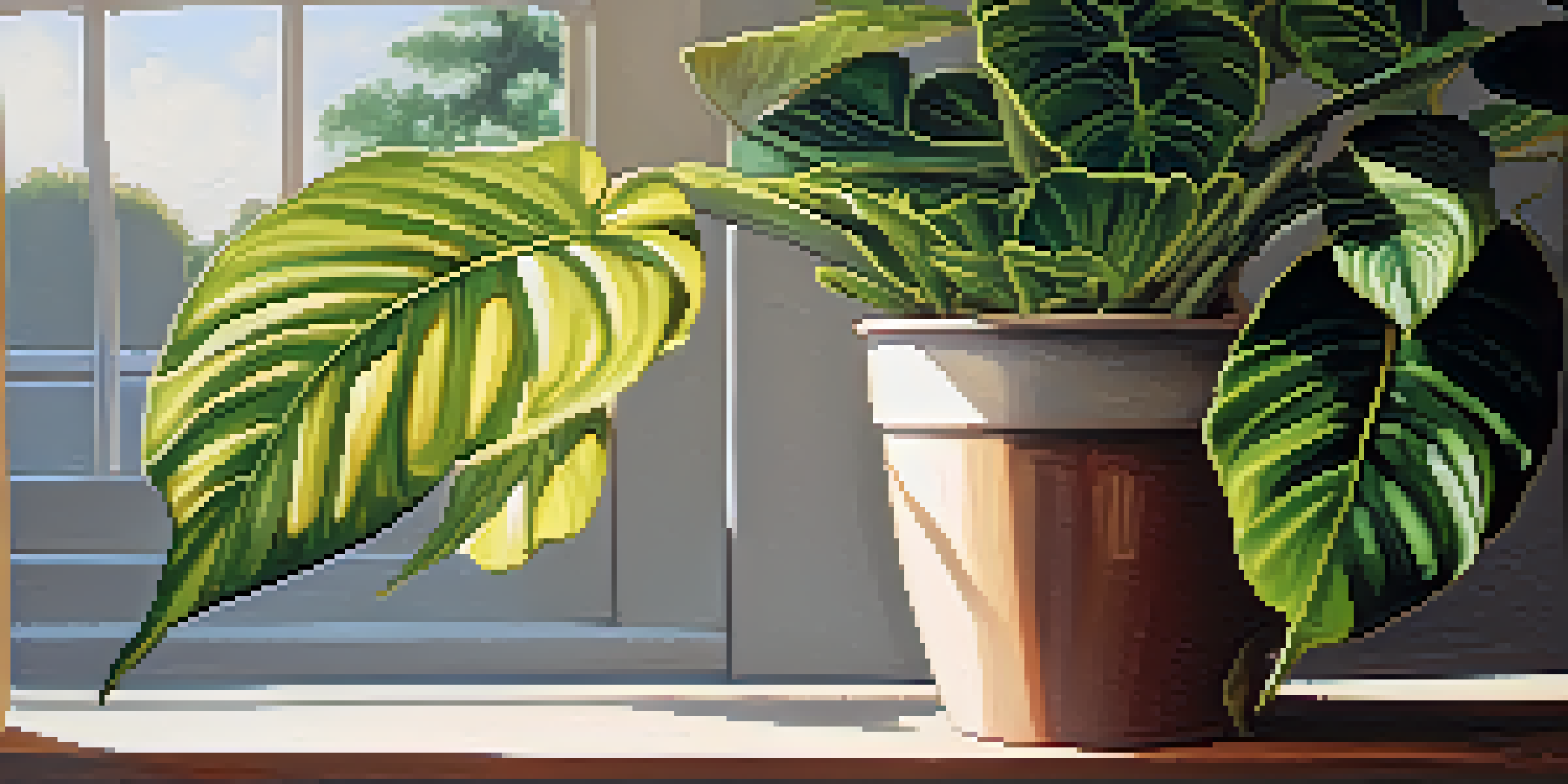Common Viral Infections Affecting Houseplants Explained

What Are Viral Infections in Houseplants?
Viral infections in houseplants are caused by microscopic pathogens that can spread from plant to plant. These viruses can lead to a range of symptoms, from discoloration to stunted growth, which can severely affect the health of your greenery. Unlike bacterial or fungal infections, viral issues often require a different approach to management, making them unique and sometimes challenging to treat.
Recognizing Symptoms of Viral Infections
Symptoms of viral infections can sometimes be subtle and mistaken for nutrient deficiencies or other issues. For instance, you might notice yellowing leaves, mottling, or unusual growth patterns. Being able to identify these signs early is crucial for prevention and can help you take action before the virus spreads.
Identify Viral Infections Early
Recognizing early symptoms like yellowing leaves and mottling is crucial for preventing the spread of viral infections in houseplants.
Common Viral Infections in Houseplants
Some of the most common viral infections include Tobacco Mosaic Virus (TMV) and Cucumber Mosaic Virus (CMV). TMV often shows up as streaks or mottled patterns on leaves, while CMV can cause leaf curling and yellowing. Knowing these specific viruses can help you understand what you're dealing with and how to address it.
How Viruses Spread Among Houseplants
Viruses can be transmitted through various means, including physical contact, contaminated tools, or even insects. For example, a simple cut on a leaf can introduce a virus into a healthy plant. Additionally, pests like aphids can act as carriers, highlighting the importance of regular pest control in your plant care routine.
Preventing Viral Spread
Maintaining hygiene by sanitizing tools and quarantining new plants can significantly reduce the risk of introducing viruses to your houseplants.
Preventive Measures to Protect Your Plants
Preventing viral infections starts with good hygiene practices. Always sanitize your gardening tools after use and avoid working with infected plants before healthy ones. Implementing quarantine measures for new plants can also help minimize the risk of introducing a virus to your existing collection.
Treating Viral Infections: What You Can Do
Unfortunately, there is no cure for viral infections in houseplants, so prevention is key. If you suspect a plant is infected, the best course of action is often to remove it to protect your other plants. Regular monitoring and prompt action can help keep your indoor garden thriving.
No Cure, Only Prevention
Since there is no cure for viral infections, removing affected plants and focusing on preventive measures is essential to protect your greenery.
Importance of Healthy Soil and Nutrients
Healthy soil and proper nutrients play a significant role in a plant's ability to resist infections. Ensuring that your houseplants receive the right balance of nutrients can bolster their immune systems. A well-fertilized plant is better equipped to fend off potential viral threats, making soil health a priority.
When to Seek Professional Help
If you’re facing persistent issues with viral infections, it may be worth consulting a professional. A plant specialist can provide insights into your specific situation and recommend solutions that are tailored to your plants. Don’t hesitate to reach out; the health of your houseplants is worth it!